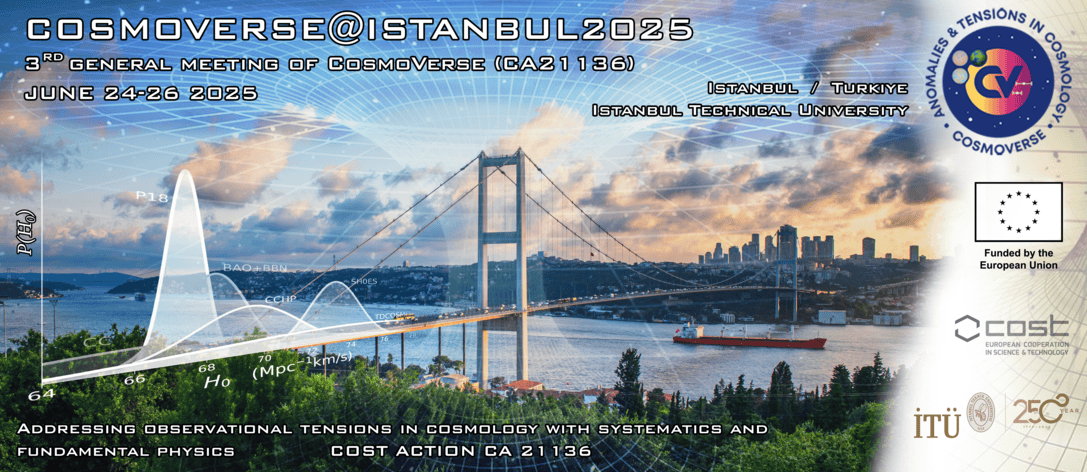Speaker
Description
Gamma-ray bursts (GRBs), can be employed as standardized candles, extending the distance ladder beyond Type Ia supernovae (SNe Ia, z = 2.9). We standardize GRBs using the two-dimensional Dainotti relation among the rest-frame end time of the X-ray plateau emission, its corresponding luminosity. This is the first time GRBs alone constraints cosmological parameters alone without the calibration on other probes with a precision comparable with SNe Ia reached a decade ago. We compare these results with the one of the 3D relation obtained by the extension of the peak prompt luminosity by choosing GRBs with internal plateau features which can be distinctive of a magnetar model. We trimmed our GRB samples to achieve tighter planes and relations to simulate additional GRBs. We determined how many GRBs are needed as stand-alone probes to achieve a comparable precision on ΩM and w to the one obtained by SNe Ia only in the current days. We also consider the aid of the machine learning analysis via lightcurve reconstruction and by adding GRBs with inferred redshifts to augment the sample of 110% and to increase the precision of the parameters of the correlations, so that the SNe Ia precision can be reached in a few years from now. We also investigate this analysis in combination with Planck results and we see that the 2D relation is more stable compared to the 3D one and we discuss the impact of the evolving dark energy models with w(z).

